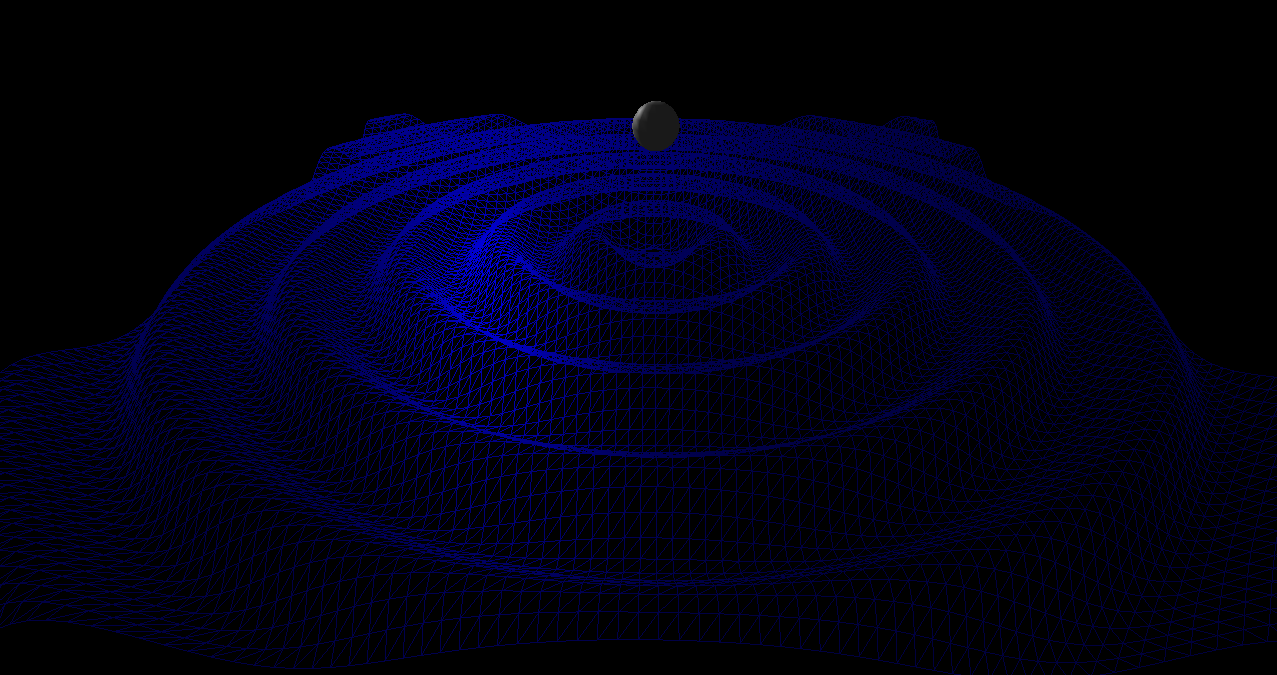I want to do a simple simulation of water drops producing waves in OpenGL with C/C++. I calculate height for each point of my plane grid in Vertex Shader with formula
 but it seems wrong at the beginning. I will atach a photo to ease the understanding:
but it seems wrong at the beginning. I will atach a photo to ease the understanding:
This is how the grid looks like at time = 0 (when the drop touched the water). The waves weren't generated only near the touch point and gradually advance. In the corners of the grid (and far from the touch point) there should be no change until a created wave approaches.

